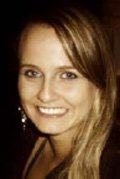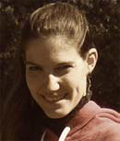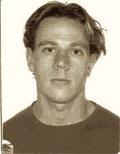|
|
|
| |
| ABSTRACT |
|
The aim of the study was to compare maximal and submaximal cardiorespiratory responses between progressive tests on a treadmill on land (TRE), and stationary running on land (SRL) and in water (SRW), while also comparing two methods of determining the second turn point (ST) (ventilatory curve and heart rate deflection point). The study sample consisted of nine active women (23 ± 1.94 years) that performed three maximal protocols in separate days. Heart rate (HR) and oxygen uptake (VO2) were measured in all sessions. The data were analyzed using repeated-measures ANOVA and two-way repeated measures ANOVA with post-hoc Bonferroni test. Greater values of maximal HR (HRmax) and HR at ST (HRST) were observed during exercise performed on TRE and during the SRL, compared to the SRW (p < 0.05). The results for maximal VO2 (VO2max) and VO2 at ST (VO2ST) showed greater and significant values on TRE compared to STL and STW (p < 0.05). Furthermore, the HR and VO2 corresponding to the ST showed similar values between the two methods. Thus, the main conclusion of the present study was that the HR deflection point seems to be a simple and practical alternative method for determining the ST in all protocols analyzed. |
| Key words:
Ventilatory curve, deflection point, second turn point, heart rate, oxygen uptake, water-based exercise
|
Key
Points
- The maximal and submaximal (second turn point) oxygen uptake were influenced by the type of exercise, as these responses were similar in both water-based and land-based stationary running protocols and different from those obtained during the treadmill running, that presented greater values compared with both stationary running protocols.
- The heart rate deflection point can be used for determining the second turn point during stationary running test in aquatic environment.
- Caution is necessary in the interpretation of the application of the heart rate deflection point in water aerobics exercises because we analyzed only young women performing one water-based exercise.
|
There is an increasing demand for aquatic exercises (Barbosa et al. , 2009), particularly for people who require activities with less impact on the lower limbs (Alberton et al. , 2013b; Barela et al., 2006), such as injured athletes (Wilder and Brennan, 2001), or for those seeking an alternative aerobic exercise (Pinto et al., 2013). Therefore, several studies have been conducted to examine the cardiorespiratory responses corresponding to exercises performed in the water in order to adjust the prescription of these activities (Alberton et al., 2013a; Azevedo et al., 2010; Barbosa et al., 2010; Svedenhag and Seger, 1992; Yazigi et al., 2013). In accordance with Barbosa et al., 2009, there are many types of exercise that subjects are able to perform in an aquatic environment (i.e., deep-water running and water-based aerobic exercises). Regarding deep-water running, several studies have investigated the maximal cardiorespiratory responses in this type of aquatic exercise (Azevedo et al., 2010; Mercer and Jensen, 1998; Michaud et al., 1995; Nakanishi et al., 1999; Svedenhag and Seger, 1992). However, few studies have analyzed these maximal responses in water-based aerobic exercises, such as stationary running, forward kicks and jumping jacks (Alberton et al., 2013a; Barbosa et al., 2010; Darby and Yaekle, 2000). Based on these studies, it has been well-established that the maximal heart rate (HRmax) in the aquatic environment is lower than on dry land due to the hydrostatic effects of water (Watenpaugh et al.; 2000). On the other hand, comparisons of the maximal oxygen uptake (VO2max) between aquatic and dry land exercises are not consistent; some studies obtained similar values as those found in cycling (Christie et al., 1990; Connelly et al., 1990; Sheldahl et al., 1984; Yazigi et al., 2013) and running on treadmills (Silvers et al., 2007), while others found lower values during deep-water running compared to running on a treadmill on land (Azevedo et al., 2010; Michaud et al., 1995; Mercer and Jensen, 1998; Nakanishi et al., 1999; Svedenhag and Seger, 1992). The study of maximal and submaximal cardiorespiratory responses is important because the percentage of VO2max, percentage of HRmax and blood lactate response may be of great use for prescribing the training intensity, both in the context of elite sports and of health promotion. The blood lactate response is considered a very precise variable for the prescription of training, as the linearity of the lactate values encounters two break points: the first and second lactate turn points, which represent different intensities and metabolic pathways. At the second turn point (ST), an imbalance occurs between the production and elimination of lactic acid (Hofmann and Tschakert, 2010). The determination of the first break point by means of exchange ventilation (spirometry) or lactate concentration has important practical implications for prescribing, and evaluating the effects of, physical training because these methods are considered the gold-standard to determine the second turn point. However, the use of lactate concentration in the determination of the ST is considered invasive and expensive; therefore, there is a need for a noninvasive method of estimating the blood lactate in response to exercise. In this context, Conconi et al., 1982 developed a running protocol based on the relationship between the heart rate (HR) and running speed. This relationship is partly linear and partly curved, and the speed at which this break in the linearity occurs (deflection point) was shown to be associated with the ST. The protocol developed by Conconi et al. (1982, 1996) has been used in investigations involving other exercises. In swimming and stationary cycling, high correlations were found between the ST established from the HR and the blood lactate response (Bodner and Rhodes, 2000; Cellini et al., 1986; Grazzi et al., 1999; Ribeiro, 1985). In field cycling, the same variables showed a very high correlation (Droghetti et al., 1985). Moreover, Martins et al., 2007 observed the HR deflection point in 85% of individuals during aquatic cycling. However, to author's best knowledge, no study has attempted to investigate the HR deflection point during water-based exercise, such as stationary running, which is a widely used exercise in water-based aerobics sessions. Furthermore, few studies have sought to determine and compare the maximal cardiorespiratory responses to water-based aerobic exercises performed in water and on land. Moreover, it is necessary to establish more reliable ways of determining the proper intensity to prescribe for water-based exercises. Thus, the purpose of this study was to determine and compare the maximal and ST cardiorespiratory responses, obtained while running on a treadmill on land and while running in place (i.e., stationary running) in the water and on land. In addition, two methods of determining the ST were compared in all protocols: the HR deflection point and the ventilatory curve. Based on previous studies investigating the cardiorespiratory responses between different protocols and environments (Azevedo et al., 2010; Svedenhag and Seger, 1992), our hypothesis was that performing the exercise on land would result in greater cardiorespiratory responses than performing the exercise in the water. However, no differences could be found between the different methods of determining the ST (Cellini et al., 1986; Debray and Dey, 2007). SubjectsThe study sample comprised nine active women volunteers (mean ± SD, age: 23.0 ± 1.9 years; height: 1.66 ± 0.06 m; body mass: 58.6 ± 4.4 kg), familiarized with the aquatic environment, who had participated in water aerobic exercises classes for at least three months. They were free of any muscle-skeletal, bone and joint, heart or lung diseases. In addition, they were not taking any medication and none of them was pregnant. The sample was selected through verbal invitation to students of physical education working in a community project involving water-based aerobic exercises and is representative of healthy young active women that participate on regular basis in water aerobics programs. The sample size was calculated using PEPI (version 4.0), in which a significance level of 0.05 and a power of 80% were adopted. The following instructions were given to the subjects for the performance of the protocols: fast for a period of 3-4 hours before the test session, subjects had to avoid stimulants, drink water ad libitum and avoid intense exercise 24 hours before the experiment. All data collection was conducted in the afternoon to avoid the effect of the circadian rhythm. The subjects signed a free informed consent form approved by the local Research Ethics Committee, which is in accordance with the Helsinki Declaration.
Data collectionThe first data collection session took place at the local university's exercise research laboratory. On the occasion, body mass and height were measured with a Filizola standard medical scale. After that, three exercise sessions were held in random order with 48-hour intervals. In each session the VO2max, the oxygen uptake at ST (VO2ST), the HRmax and heart rate at ST (HRST) were measured. The sessions were performed in environments with a thermoneutral temperature for exercise. In the aquatic environment, the water temperature ranged from 31-32°C (Sheldahl et al., 1984) and the immersion was up to the xiphoid process level (Barbosa et al., 2007). On land, the temperature ranged from 21-26°C. Each protocol began with the acquisition of cardiorespiratory variables at rest, out of water. The subjects rested in a supine position for 30 minutes and the HR and VO2 values from the last 3 minutes were collected. The at-rest cardiorespiratory responses were collected in order to evaluate whether the subjects initiated the three test protocols with similar HR and VO2 levels. The maximal test was carried out on a treadmill (TRE) (model 10200 ATL, INBRAMED) in order to evaluate the maximal and submaximal VO2 (VO2max; VO2ST) and HR (HRmax; HRST). The protocol began with a 3-minute warm up at a velocity of 6 km·h-1 with 1% inclination. After this, the velocity was increased each 2 minutes by increments of 1 km·h-1, while the inclination remained unchanged. The stationary running exercise, both in the aquatic environment (STW) and on land (STL), was performed for 2 minutes at each pre-determined cadence of movement (beats per minute), until the subject reached the maximal effort. A compact disc was used to reproduce the cadences used during the protocols. The range of movement was controlled during the stationary running exercise by placing a strip of silver tape fixed in vertical bars standing next to the subjects at 90° of hip flexion, measured for each subject (Costa et al., 2011). On land, the cadences ranged between 55 and 205 beats per minute (bpm), equivalent to 0.92 and 3.42 Hz, respectively. In the aquatic environment, ranged between 85 (1.42 Hz) and 205 bpm (3.42 Hz) and in both environments the cadences were increased by 15 bpm (0.25 Hz) every 2 minutes. The cadences were chosen to ensure that the total time of the protocols was similar (TRE: 11.81 ± 1.82; STL: 11. 47 ± 1.75; STW: 13.82 ± 2.26 min). The initial cadence of movement on land was lower than in water since in water two external forces influence the body: downward weight and upward buoyancy. Thus, the perceived weight in water environment (hydrostatic weight) is reduced due to simple vector sum. Less muscle recruitment is then required to maintain the body position in water and consequently the exercise can be endured for longer (Alberton et al., 2013b). In both stationary running protocols, the maximal and submaximal VO2 and HR were analyzed. In the three protocols the maximal test was stopped when the subjects indicated their exhaustion using a hand signal. In addition, the assessment was considered valid when any of the following criteria were met at the end of the test: respiratory exchange ratio (RER) greater than 1. 15 and a maximal respiratory rate of at least 35 breaths per minute (Howley et al., 1995). In order to measure HR, a Polar HR monitor (model FS1) was used. A mixing-box-type portable VO2000 gas analyzer (INBRAMED) was used to measure the VO2 and ventilation (VE). The equipment was calibrated according to the manufacturer's instructions prior to each collection session. The sampling rate of the collected values was 10 s. For analysis of the variables at rest, the means of the variables collected during the last 3 minutes of the three pre-exercise protocols were calculated. The highest HR value obtained during the tests was considered the HRmax. VO2 was regarded as maximal if at the end of the test there was a difference smaller than 2.1 ml·kg-1·min-1 between consecutive 1-minute gas measurements for two stages in a row. When there was no plateau in VO2 values at the end of the test, the peak VO2 was regarded as the VO2max (Howley et al., 1995). Furthermore, based on the cardiorespiratory data obtained during exercise, the ST for HR was determined from the HR deflection point (HR-by-intensity) (Carey et al., 2002). In addition, the ST was determined by the ventilation curve (VE-by-intensity) and it was confirmed by means of the CO2 ventilatory equivalent (VE/VCO2) (Carey et al., 2005; Wasserman et al., 1973). The curves were visually analyzed by three independent, blinded, experienced exercise physiologists. The points corresponding to the ST for each method were considered valid when two of the three analysts identified the same value. In the present study the determination of the ST by the ventilatory data is considered the gold-standard method.
Statistical analysisDescriptive statistics were used and the data presented as means±standard deviation (SD). The Shapiro-Wilk normality test was executed (p > 0.05). The at-rest cardiorespiratory responses from the three days and the VO2max and HRmax from the three protocols (TRE, STL and STW) were analyzed using repeated measures ANOVA. Repeated measures two-way ANOVA (factors: protocols and methods) was used to compare the differences in the HRST and VO2ST variables. When applicable, Bonferroni post-hoc tests were used. The level of significance was set at α=0.05 and statistical package used was SPSS version 17.0. The statistical observed power was 99.9% for HRmax and VO2max in the protocols factor. In addition, for HRST and VO2ST the statistical observed power was 65% and 98% in the protocols factor, respectively. In the methods factor the statistical observed power was 27% and 30% for HRST and VO2ST, respectively. In addition, the effect size index (eta2) of main factors was calculated using the formula eta2=SSfactor/SStotal, where SSfactor is the sum of squares for whatever factor of interest and SStotal is the total sum of squares of all factors (i.e.; protocols and method), interaction (i.e., protocols*methods) and errors in the ANOVA.
There were no significant differences between the three days of pre-exercise for the at-rest HR and VO2 values (HR TRE: 74.37 ± 9.38; SRL: 76.06 ± 9.49; SRW: 72.05 ± 7.31 bpm; p = 0.273; VO2 TRE: 4.38 ± 0.73; SRL: 4.04 ± 0.74; SRW: 3.81 ± 0.74 ml·kg-1·min-1; p = 0.108). Thus, the magnitude of the alterations found for these variables during the exercise protocols can be attributed to the effort made during their execution. The results for the HRmax and VO2max are presented in Table 1. There was a significant lower HRmax value in the protocol in water (SRW) compared to the two protocols on land (TRE, SRL) [F(2,7) = 36.128, p < 0.001]. For the VO2max, the results showed significant greater values for the treadmill protocol when compared to the two stationary running protocols [F(2,7) = 14.121, p = 0.004]. In addition, between the SRW and SRL no significant differences were found. The eta2 for HRmax and VO2max was 0.84 and 0.64 in the protocols factor, respectively. Table 2 presents the results of HR and VO2 at ST, determined using the ventilatory curve and the HR deflection point. The behavior of the variables at the ST was similar to that we found in the maximal cardiorespiratory values, with lower values of HR in water compared to the treadmill and stationary running performed on land; and greater VO2 values on the treadmill compared to both stationary running protocols [HRST: F(2,7) = 4.519, p = 0.031; VO2ST: F(2,7) = 15.338, p < 0.001]. In addition, the HR and VO2 at ST showed similar values between the ventilatory curve and heart rate deflection point methods [HRST: F(1,8) = 2.431, p = 0.163; VO2ST: F(1,8) = 2.730, p = 0.142]. The eta2 for HRST and VO2ST was 0.009 and 0.003 in the methods factor, respectively. In the protocols factor the eta2 for HRST and VO2ST was 0.35 and 0.90, respectively. Moreover, the eta2 in the interaction effect (i.e., protocols*methods) was 0.02 for the HRST and 0.007 for the VO2ST. The purpose of this study was to compare the maximal and ST cardiorespiratory responses between three maximal protocols: treadmill running on land, stationary running in water and stationary running on land. In addition, two methods of determining the ST were compared in all protocols: the HR deflection point and the ventilatory curve. The main finding of the present study was that no significant difference was found between the two methods of determining the ST (ventilatory curve and HR deflection point). In addition, the VO2ST and VO2max values for the two stationary running protocols were similar but these protocols presented lower values compared to those from the treadmill protocol performed on land. Thus, our first hypothesis was partially rejected because our results showed no difference for VO2 between the protocols with stationary running. These HR responses, for both maximal and submaximal exercises, have been well described in the literature because the HR undergoes alteration with immersion in water, as the submerged body is subject to hydrostatic pressure. This acts to increase the venous return from the peripheral regions to the central region of the body, increasing the volume of blood in the heart and consequently leading to increased systolic volume and lower HR to maintain the cardiac output (Arborelius et al., 1972). In addition, the human dive reflex, a physiological phenomenon similar to the bradycardic reflex (Smith et al., 2012), might explain the lower heart rate response in the aquatic environment. Thus, it can be inferred that one determining factor for the behavior of HR is the environment in which the exercise is performed. The VO2 responses observed in this study are in accordance with those of other studies in the literature that showed lower values for VO2max in the horizontal displacement of the body in an aquatic environment, such as deep-water running, which is performed without the feet coming into contact with the ground (Azevedo et al., 2010; Michaud et al., 1995; Mercer and Jensen, 1998; Nakanishi et al., 1999; Svedenhag and Seger, 1992). These studies have compared the VO2max responses between deep-water running and treadmill running on land. Thus, it can be inferred that the lower VO2 in the aquatic environment can be explained by the fact that different exercises involving different forms of supporting the body's weight and different muscle groups were compared. Studies have demonstrated that exercise performed in water may generate lower muscle activity when compared to exercises performed on land; this response might be related to the force of buoyancy (Alberton et al., 2011; Barbosa et al., 2009; Masumoto et al., 2009). Evidence from the present study supports this explanation because we found similar VO2max values for a single exercise (stationary running) regardless of the environment. Other studies have found similar VO2 values when comparing similar cycling protocols in water to the suprasternal notch (Christie et al., 1990) and xiphoid process (Yazigi et al., 2013) cycling protocols on land. Therefore, it can be stated that a determining factor for the VO2 pattern is the type of exercise performed. In relation to the maximal cardiorespiratory response, it is also important to highlight that many studies used maximal treadmill tests to determine the percentages of exercise intensity performed in the water. However, these values might have been overestimated because in the present study, the treadmill test showed greater VO2max values than either of the stationary running protocols. Thus, the performance of the maximal test in an aquatic environment has been shown to be of great importance in prescribing the percentages of training (i.e., %HRmax or %HRST) more accurately. Although the biomechanics (i.e., gait kinematics and kinetics) and physiological responses are slightly different among stationary running and walking or running (i.e., on treadmill) on dry land and in water, the study of these responses is important for a proper and safe prescription of these activities. It is important to highlight that conducting maximal testing on certain populations (i. e., elderly people and people with heart disease) requires careful medical supervision. Furthermore, it should be noted that some people are unable to accomplish the maximal tests (i.e., pregnant women and people with musculoskeletal disorders, especially in the lower limbs). Moreover, regarding the practical applicability of this study, no significant difference was found between the methods of determining the ST. In swimming, a correlation of r = 0.84 was found between the ST determined from the HR deflection point and the ST determined from the blood lactate response (Cellini et al., 1986). In stationary cycling, the correlations between these variables ranged from r = 0.92 to r = 0.97, while in field cycling, a correlation of r = 0.99 was found (Droghetti et al., 1985; Grazzi et al., 1999; Ribeiro, 1985). In addition, Martins et al., 2007 were able to find a deflection point in 85% of the subjects evaluated during an aquatic cycling exercise. Studies have also reported the relationship between the ST determined by the ventilatory method and by the HR deflection point (Baraldi et al., 1989; Cabo et al., 2011; Grazzi et al., 2008). Debray and Dey, 2007 showed a correlation of 0.94 between the VO2 obtained by the ventilatory method and the VO2 obtained by the HR deflection point method. Most of the above-mentioned studies regarding the HR deflection point were performed by elite athletes of various sports; however, other studies showed that the ST may also be determined from the HR deflection point in untrained middle-aged men (Bunc and Heller, 1992), children (Baraldi et al., 1989; Mahon and Vaccaro, 1991) and adolescents (Ballarin et al., 1989; Debray and Dey, 2007). It is important to highlight that caution should be used in the interpretation of the present results, as the degree of HR deflection is highly dependent upon the type of protocol used (Bodner and Rhodes, 2000; Hofmann and Pokan, 2010). In this context, Pokan et al., 1999 reported that protocols incorporating nonlinear time or speed increments allowed for arbitrary designations of the HR deflection and were therefore not valid. In addition, the validity of the HR deflection point to assess the ST is sometimes uncertain (Bodner and Rhodes, 2000). However, a strong correlation exists between the HR deflection point and the second lactate and ventilatory turn points (Baraldi et al., 1989; Bunc and Heller, 1992; Hofmann et al., 1997). It is important to note the limitations regarding the HR deflection point method; however, the application of this method to fitness programs is still advised. Overall, the evidence from earlier studies and the findings provided by the present study suggest that evaluating the deflection point is an accessible and convenient method of determining the ST because it only requires a heart rate monitor and a well-structured protocol with progressive increases in load. Additionally, this method is very popular because it is an inexpensive and non-invasive method of determining the ST. Thus, using the HR-by-intensity graph obtained from a progressive test of one of the protocols analyzed in the present study (i.e., water-based stationary running, land-based stationary running or treadmill running on land), the HR deflection point can be determined. From this graph, it is possible to calculate the percentage of the heart rate corresponding to ST to prescribe the desired training zone. Moreover, the HR deflection point has the potential to be used for training regulation purposes in the short term (Bodner and Rhodes, 2000; Hofmann and Pokan, 2010; Hofmann et al., 1997). When prescribing aquatic exercise, it is crucial that the test be carried in the same environment; even though there was no difference in the VO2max between the two environments in the stationary running test, the HRmax is reduced in water compared with the value obtained on land. One of the limitations of the present study is the fact that only nine young women were analyzed during the maximal protocols. Therefore, the sample size of the present study might have influenced the external validity of our findings with regards to the methods (i.e., ventilatory curve method vs. heart rate deflection point method). Another possible limitation is related to the fact that no computer support was used during the determination of turn points; some authors have reported that this technique is necessary to obtain reliable results (Hofmann and Pokan, 2010). However, visual analysis may provide information that is very similar to the data obtained through computer analysis. It is important to highlight that the accuracy of the visually obtained information varies according to the observer's experience (Ballarin et al., 1996). In addition, the water temperature used in the most countries was lower (i.e.; 28-29°C) than that used in the present study (i.e., 31-32°C). Therefore, the validity of the magnitude values of the present study may be limited to our experimental condition. Suggestions for future studies include the analysis of the maximal and submaximal (i.e., second HR turn point) cardiorespiratory responses during different water-based exercises performed by other populations (i.e., older subjects). Moreover, an interesting issue for future research is the validity (i.e., representative sample size) of the HR deflection point in determining the ST during a maximal test in an aquatic environment. According to the results, both the maximal heart rate and the heart rate corresponding to the second turn point had lower values in the aquatic environment (i.e., water-based stationary running) than on land (i.e., land-based stationary running and treadmill running on land). Furthermore, the values of maximal oxygen uptake and the second turn point were similar in both water-based and land-based stationary running protocols, as well as similarly lower than those obtained during treadmill running on land. Moreover, the second turn point determined using the heart rate deflection point showed similar values to those obtained using the ventilatory curve. Therefore, the heart rate deflection point can be used as a simple and practical alternative for determining the second turn point during different protocols in aquatic and land environments.
| ACKNOWLEDGEMENTS |
The authors specially thank FAPERGS, CAPES and CNPq Brazilian Government Associations for supporting this project. We also gratefully acknowledge all subjects who participated in this research. |
|
| AUTHOR BIOGRAPHY |
|
 |
Luiz Fernando M. Kruel |
| Employment: Assistant Professor at the Federal University of Rio Grande do Sul, Porto Alegre, Brazil and coordinator of the Research Group in Water and on Dry Land Activities. |
| Degree: PhD |
| Research interests: Physiology and biomechanics of different modalities in both environments. |
| E-mail: kruel@esef.ufrgs.br |
| |
 |
Débora D. Beilke |
| Employment: Researcher at the Research Group in Water and on Dry Land Activities |
| Degree: BPe |
| Research interests: Biomechanics in water and on land. |
| E-mail: debora_beilke@yahoo.com.br |
| |
 |
Ana C. Kanitz |
| Employment: Researcher of the Research Group in Water and on Dry Land Activities. |
| Degree: MSc |
| Research interests: Physiology and biomechanics of aquatic exercises. |
| E-mail: ana_kanitz@yahoo.com.br |
| |
 |
Cristine L. Alberton |
| Employment: Adjunct Professor at the Federal University of Pelotas, Pelotas, Brazil and Researcher of the Research Group in Water and on Dry Land Activities. |
| Degree: PhD |
| Research interests: Physiology and biomechanics of exercise, especially aquatic exercises. |
| E-mail: tinialberton@yahoo.com.br |
| |
 |
Amanda H. Antunes |
| Employment: Researcher of the Research Group in Water and on Dry Land Activities. |
| Degree: MSc |
| Research interests: Physiology and biomechanics of exercise in different environments. |
| E-mail: amandaha@hotmail.com |
| |
 |
Patrícia D. Pantoja |
| Employment: Researcher of the Research Group in Water and on Dry Land Activities. |
| Degree: MSc |
| Research interests: Physiology and biomechanical analysis of human movement in different environments and sports. |
| E-mail: pattypant@hotmail.com |
| |
 |
Eduardo M. da Silva |
| Employment: Researcher of the Research Group in Water and on Dry Land Activities. |
| Degree: MSc |
| Research interests: Kinesiology and biomechanical analysis of human movement in different environments. |
| E-mail: eduardomarczwski@hotmail.com |
| |
 |
Stephanie S. Pinto |
| Employment: Adjunct Professor at the Federal University of Pelotas, Pelotas, Brazil and Researcher of the Research Group in Water and on Dry Land Activities. |
| Degree: PhD |
| Research interests: Physiology and biomechanics of exercise, especially aquatic exercises. |
| E-mail: tetisantana@yahoo.com.br |
| |
|
| |
| REFERENCES |
 Alberton C.L., Antunes A.H., Beilke D.D., Pinto S.S., Kanitz A.C., Tartaruga M.P., Kruel L.F. (2013a) Maximal and ventilatory thresholds of oxygen uptake and rating of perceived exertion responses to water aerobic exercise. Journal of Strength and Conditioning Research 27, 1897-1903. |
 Alberton C.L., Cadore E.L., Pinto S.S., Tartaruga M.P., da Silva E.M., Kruel L.F. (2011) Cardiorespiratory, neuromuscular and kinematic responses to stationary running performed in water and on dry land. European Journal of Applied Physiology 111, 1157-1166. |
 Alberton C.L., Tartaruga M.P., Pinto S.S., Cadore E.L., Haberland A.A., Finatto P., Kruel L.F. (2013b) Vertical ground reaction force during water exercises performed at different intensities. International Journal of Sports Medicine , -. |
 Arborelius M., Baldlin U.I., Lilja B., Lundgren C.E. (1972) Hemodynamic changes in man during immersion with the head above water. Aerospace Medicine 43, 590-598. |
 Azevedo L.B., Lambert M.I., Zogaib P.S., Barros Neto T.L. (2010) Maximal and submaximal physiological responses to adaptation to deep water running. Journal of Sports Sciences 28, 407-414. |
 Ballarin E., Borsetto C., Cellini M., Patracchini M., Vitiello P., Ziglio P.G., Conconi F. (1989) Adaptation of the “Conconi test” to children and adolescents. International Journal of Sports Medicine 10, 334-338. |
 Ballarin E., Sudhues U., Borsetto C., Casoni I., Grazzi G., Guglielmini C., Manfredini F., Mazzoni G., Conconi F. (1996) Reproducibility of the Conconi test: test repeatability and observer variations. International Journal of Sports Medicine 17, 520-527. |
 Baraldi E., Zanconato S., Santuz P.A., Zacchello F. (1989) A comparison of two noninvasive methods in the determination of the anaerobic threshold in children. International Journal of Sports Medicine 10, 132-134. |
 Barbosa T.M., Garrido M.F., Bragada J.A. (2007) Physiological adaptations to head-out aquatic exercises with different levels of body immersion. Journal of Strength and Conditioning Research 21, 1255-1259. |
 Barbosa T.M., Marinho D.A., Reis V.M., Silva A.J., Bragada J.A. (2009) Physiological assessment of head-out aquatic exercises in healthy subjects: a qualitative review. Journal of Sports Science and Medicine 8, 179-189. |
 Barbosa T.M., Sousa V.F., Silva A.J., Reis V.M., Marinho D.A., Bragada J.A. (2010) Effects of musical cadence in the acute physiologic adaptations to head-out aquatic exercises. Journal of Strength and Conditioning Research 24, 244-250. |
 Barela A.M., Stolf S.F., Duarte M. (2006) Biomechanical characteristics of adults walking in shallow water and on land. Journal of Electromyography and Kinesiology 16, 250-256. |
 Bodner M.E., Rhodes E.C. (2000) A review of the concept of the heart rate deflection point. Sports Medicine 30, 31-46. |
 Bunc V.J., Heller J. (1992) Comparison of two methods of noninvasive anaerobic threshold determination in middle-aged men. Sports Medicine, Training and Rehabilitation 3, 87-94. |
 Cabo J.V., Martinez-Camblor P., del Valle M. (2011) Validity of the modified conconi test for determining ventilatory threshold during on-water rowing. Journal of Sports Science and Medicine 10, 616-623. |
 Carey D., Duoos B., Raymond R. (2002) Intra- and Inter-observer reliability of the heart rate deflection point during incremental exercise: comparison to computer-generated deflection point. Journal of Sports Science and Medicine 4, 115-122. |
 Carey D.G., Schwarz L.A., Pliego G.J., Raymond R.L. (2005) Respiratory rate is a valid and reliable marker for the anaerobic threshold: implications for measuring change in fitness. Journal of Sports Science and Medicine 4, 482-488. |
 Cellini M., Vitello P., Nagliat A., Ziglio P.G., Martinelli S., Ballarin E., Conconi F. (1986) Noninvasive determination of the anaerobic threshold swimming. International Journal of Sports Medicine 7, 347-351. |
 Christie J.L., Sheldal L.M., Tristani F.E., Wann L.S., Sagar K.B., Levandoski S.G., Ptacin M.J., Sobocinski K.A., Morris R.D. (1990) Cardiovascular regulation during head-out water immersion exercise. Journal of Applied Physiology 69, 657-664. |
 Conconi F., Ferrari M., Zioglio P., Droghetti P., Codeca L. (1982) Determination of the anaerobic threshold by a noninvasive field test in runners. Journal of Applied Physiology 52, 869-873. |
 Conconi F., Grazzi G., Casoni I., Guglielmini C., Borsetto C., Ballarin E., Mazzoni G., Patracchini M., Manfredini F. (1996) The Conconi test: methodology after 12 years of application. International Journal of Sports Medicine 17, 509-519. |
 Connelly T.P., Sheldahl L.M., Tristani F.E., Levandoski S.G., Kalkhoff R.K., Hoffman M.D., Kalbfleisch J.H. (1990) Effect of increased central blood volume with water immersion on plasma catecholamines during exercise. Journal of Applied Physiology 69, 651-656. |
 Costa M.J., Oliveira C., Teixeira G., Marinho D.A, Silva A.J., Barbosa T.M. (2011) The influence of musical cadence into aquatic jumping jacks kinematics. Journal of Sports Science and Medicine 10, 607-615. |
 Darby L.A., Yaekle B.C. (2000) Physiological responses during two types of exercise performed on land and in the water. Journal of Sports Medicine and Physical Fitness 40, 303-311. |
 Debray P., Dey S.K. (2007) A comparison of the point of deflection from linearity of heart rate and the ventilatory threshold in the determination of the anaerobic threshold in Indian boys. Journal of Physiological Anthropology 26, 31-37. |
 Droghetti P., Borsetto C., Cellini M., Ferrari M., Paolini A.R., Ziglio P.G., Conconi F. (1985) Noninvasive determination of the anaerobic threshold in canoeing, cross-country skiing, cycling, roller, and ice skating, rowing, and walking. European Journal of Applied Physiology 53, 299-303. |
 Grazzi G., Alfieri N., Borsetto C., Casoni I., Manfredini F., Mazzoni G., Conconi F. (1999) The power output/heart rate relationship in cycling: test standardization and repeatability. Medicine and Science in Sports and Exercise 31, 1478-1483. |
 Grazzi G., Mazzoni G., Casoni I., Iliari S., Collini G., Heide L., Conconi F. (2008) Identification of a VO2 deflection point coinciding with the heart rate deflection point and ventilatory threshold in cycling. Journal of Strength and Conditioning Research 22, 1116-1123. |
 Hofmann P., Pokan R. (2010) Value of the application of the heart rate performance curve in sports. International Journal of Sports Physiology and Performance 5, 437-447. |
 Hofmann P., Pokan R., von Duvillard S.P., Seibert F.J., Zweiker R., Schmid P. (1997) Heart rate performance curve during incremental cycle ergometer exercise in healthy young male subjects. Medicine and Science in Sports and Exercise 29, 762-768. |
 Hofmann P., Tschakert G. (2010) Special needs to prescribe exercise intensity for scientific studies. Cardiology Research and Practice 15, 209302-. |
 Howley E.T., Basset D., Welch H.G. (1995) Criteria for maximal oxygen uptake: review and commentary. Medicine and Science in Sports and Exercise 27, 1292-1301. |
 Mahon A.D., Vaccaro P. (1991) Can the point of deflection from linearity of heart rate determine ventilatory threshold in children?. 3, 256-262. |
 Martins J.N., Filho M.G., Costa V.P., Lima J.R. (2007) Conconi test adapted to aquatic bicycle. Revista Brasileira de Medicina do Esporte 13, 287e-290e. |
 Masumoto K., Delion D., Mercer J.A. (2009) Insight into muscle activity during deep water running. Medicine and Science in Sports and Exercise 41, 1958-1964. |
 Mercer J.A., Jensen R.L. (1998) Heart rate at equivalent submaximal levels of VO2 do not differ between deep water running and treadmill running. Journal of Strength and Conditioning Research 12, 161-165. |
 Michaud T.J., Rodriguez-Zayas J., Andres F.F., Flynn M.G., Lambert C.P. (1995) Comparative exercise responses of deep-water and treadmill running. Journal of Strength and Conditioning Research 9, 104-109. |
 Nakanishi Y., Kimura T., Yoko Y. (1999) Maximal responses to deep water running at thermoneutral temperature. Journal of Physiological Anthropology and Applied Human Science 18, 31-35. |
 Pinto S.S., Cadore E.L., Alberton C.L., Zaffari P., Bagatini N.C., Baroni B.M., Radaelli R., Lanferdini F.J., Colado J.C., Pinto R.S., Vaz M.A., Bottaro M., Kruel L.F.M. (2013) Effects of intra-session exercise sequence during water-based concurrent training. International Journal of Sports Medicine , -. |
 Pokan R., Hofmann P., von Duvillard S.P., Smekal G., Högler R., Tschan H., Baron R., Schmid P., Bachl N. (1999) The heart rate turn point reliability and methodological aspects. Medicine and Science in Sports and Exercise 31, 903-907. |
 Ribeiro J.P. (1985) Heart rate break point may coincide with the anaerobic threshold and not the aerobic threshold. International Journal of Sports Medicine 6, 220-224. |
 Sheldahl L.M., Wann L.S., Clifford P.S., Tristani F.E., Wolf L.G., Kalbfleisch J.H. (1984) Effect of central hypervolemia on cardiac performance during exercise. Journal of Applied Physiology 52, 1662-1667. |
 Silvers W.M., Rutledge E.R., Dolny D.G. (2007) Peak cardiorespiratory responses during aquatic and land treadmill exercise. Medicine and Science in Sports and Exercise 39, 969-975. |
 Smith G., Morgans A., Taylor D.M., Cameron P. (2012) Use of the human dive reflex for the management of supraventricular tachycardia: a review of the literature. Emergency Medicine Journal 29, 611-616. |
 Svedenhag J., Seger J. (1992) Running on land and in water: comparative exercise physiology. Medicine and Science in Sports and Exercise 24, 1155-1160. |
 Wasserman K., Whipp B.J., Koyal S.N., Beaver W.L. (1973) Anaerobic threshold and respiratory gas exchange during exercise. Journal of Applied Physiology 35, 236-243. |
 Watenpaugh D.E., Pump B., Bie P., Norsk P. (2000) Does gender influence human cardiovascular and renal responses to water immersion?. Journal of Applied Physiology 89, 621-628. |
 Wilder R.P., Brennan D.K., O'Connor F.G., Wilder R.P. (2001) Textbook of Running Medicine. Aqua Running. New York. McGraw-Hill. |
 Yazigi F., Pinto S., Colado J., Escalante Y., Armada-Da-Silva P.A.S., Brasil R., Alves F. (2013) The cadence and water temperature effect on physiological responses during water cycling. European Journal of Sport Science , -. |
|
| |
|
|
|
|

